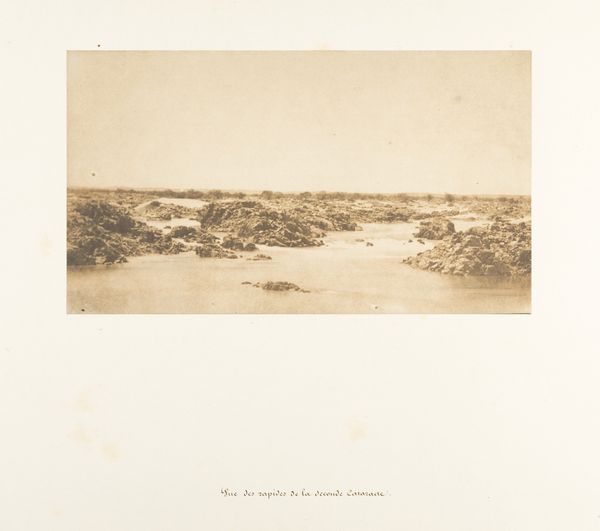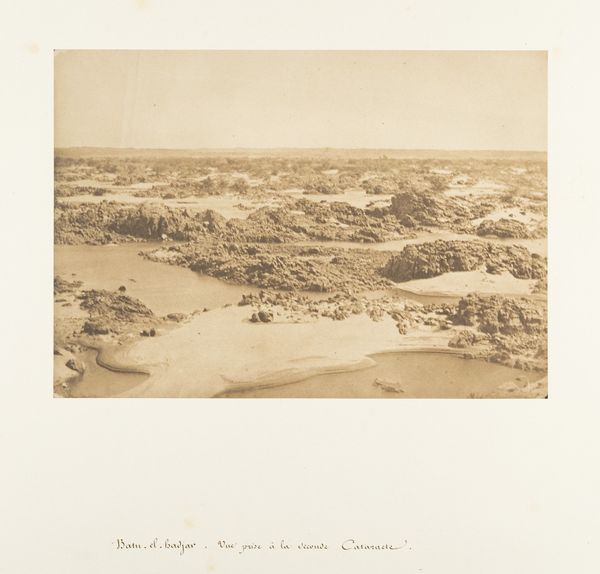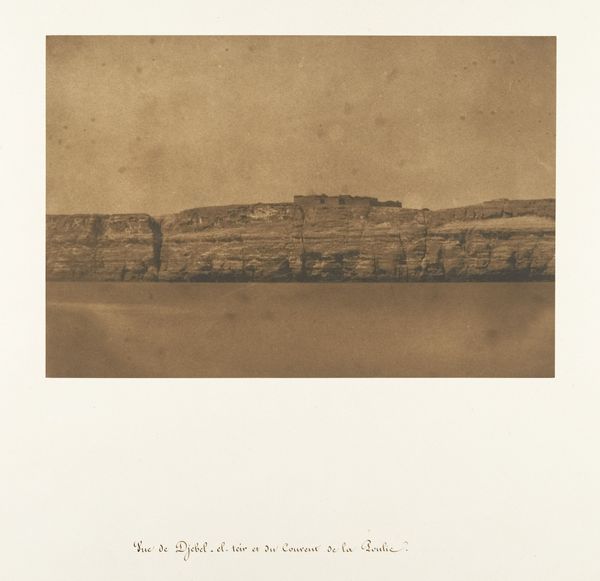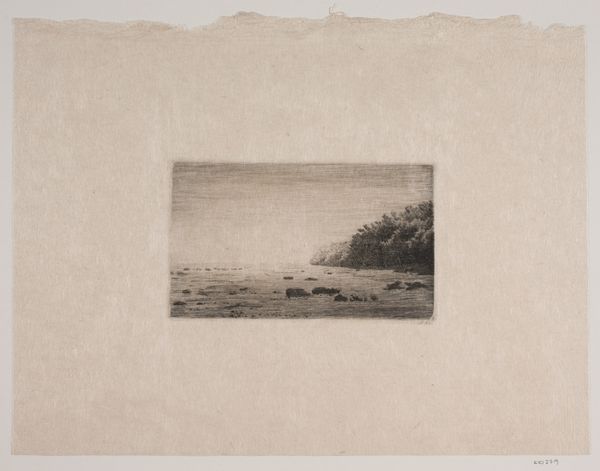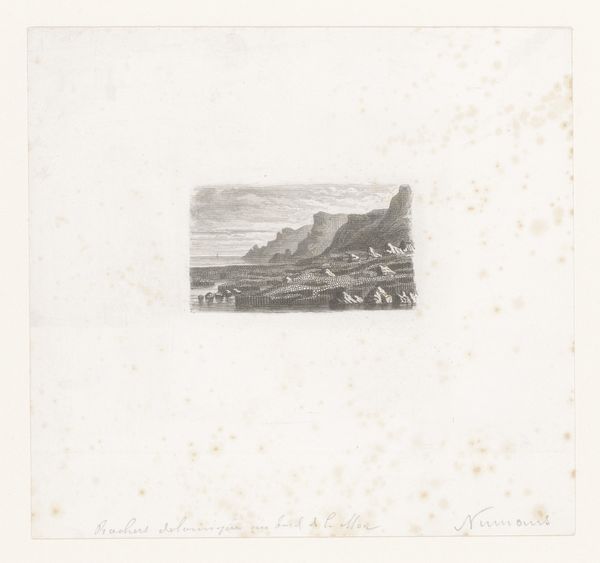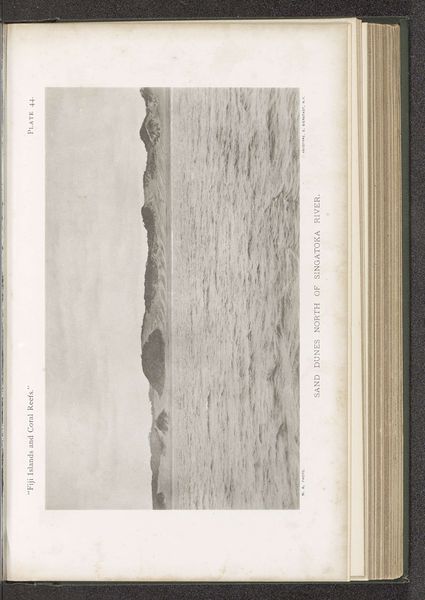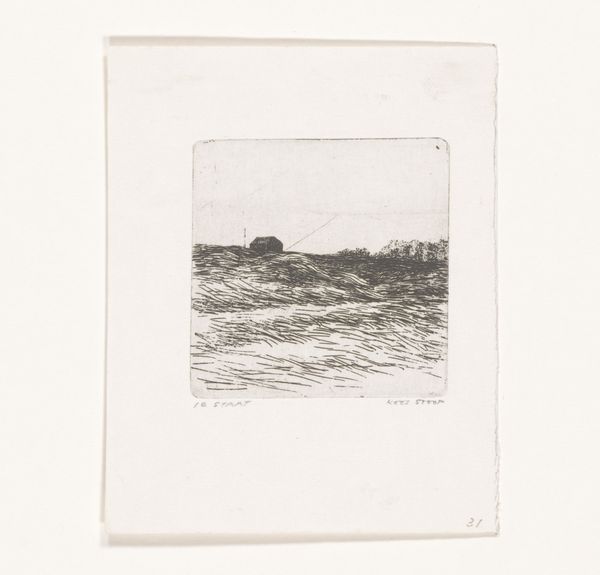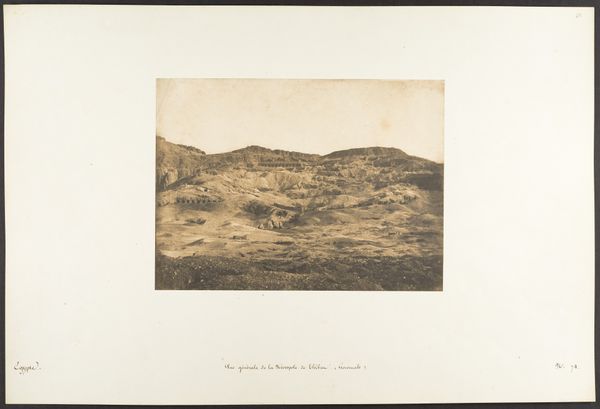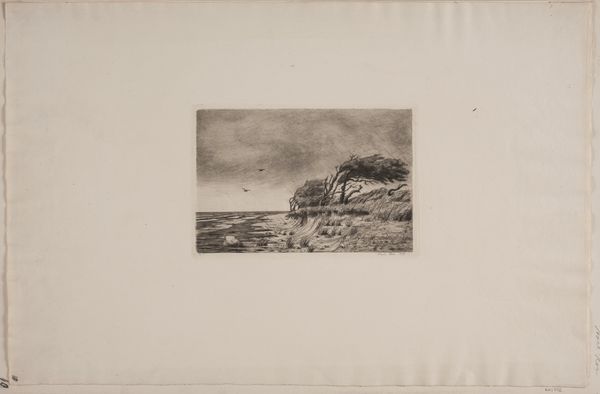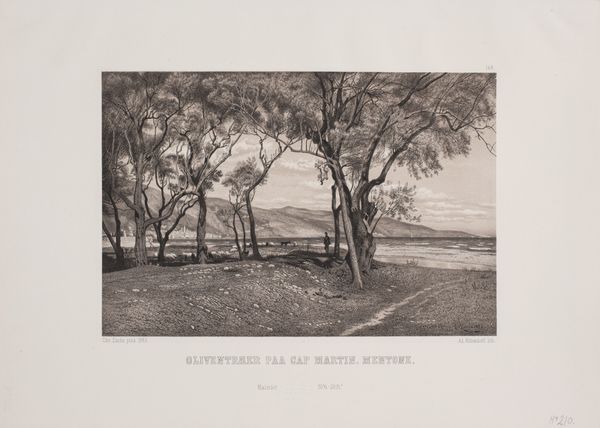
daguerreotype, photography
#
landscape
#
daguerreotype
#
photography
#
orientalism
Dimensions: Image: 5 1/2 × 8 11/16 in. (14 × 22 cm) Mount: 12 5/16 × 18 11/16 in. (31.3 × 47.5 cm)
Copyright: Public Domain
Curator: This is "Vue prise à la Seconde Cataracte" by Maxime Du Camp, a daguerreotype made in 1850. Its soft sepia tones create an almost dreamlike depiction of the Second Cataract of the Nile. Editor: Wow, dreamlike is right! It’s a still moment captured with such beautiful muted earth tones. There’s something about it that feels incredibly old, a ghost from the past. Almost as if this place does not exist anymore. Curator: The beauty here stems precisely from the composition and the medium. The horizontal format, bisected roughly into sky and water, emphasizes the expanse of the landscape. The textures of the rocky outcroppings provide detailed relief against the smooth, reflective water. Editor: The contrast works so well, I have to say, there is this play between detail and the overall soft dreamy aesthetic, like you're trying to hold onto something very real and raw but it starts dissolving right in front of you... The image invites you to sink in its texture and wonder what secrets this river keeps. Curator: That textural contrast indeed, reinforces a deeper meaning. Du Camp was part of Flaubert's expedition to Egypt, using photography as documentation but also, undeniably, contributing to the 19th-century European fascination with the Orient. Editor: Oh, interesting. Now that you say it I imagine being a tourist in a foreign place and finding both its beauty and harshness striking and I guess, exotic! There’s an attempt at preservation. I also notice the weight that is involved with such expeditions - but the final result, at least with the photo, is magical and kind of suspends everything into this in-between place. Curator: The daguerreotype, a unique image on a silvered copper plate, lends a distinctive look, doesn't it? Unlike later photographic processes, each daguerreotype is one of a kind, an unrepeatable moment. Its uniqueness further heightens its status as an objet d'art. Editor: I agree; it’s kind of mesmerizing to think about that. I guess it adds an extra layer of beauty knowing that this very thing we're witnessing can't exist elsewhere at any other time. A time capsule! Curator: Precisely. Through its unique combination of light, texture, and composition, Du Camp's work offers us a lens into both the Egyptian landscape and the Western gaze of the mid-19th century. Editor: Exactly! It definitely makes you question perception, doesn't it? A frozen moment in time can invite endless imaginings of past and present...
Comments
No comments
Be the first to comment and join the conversation on the ultimate creative platform.
